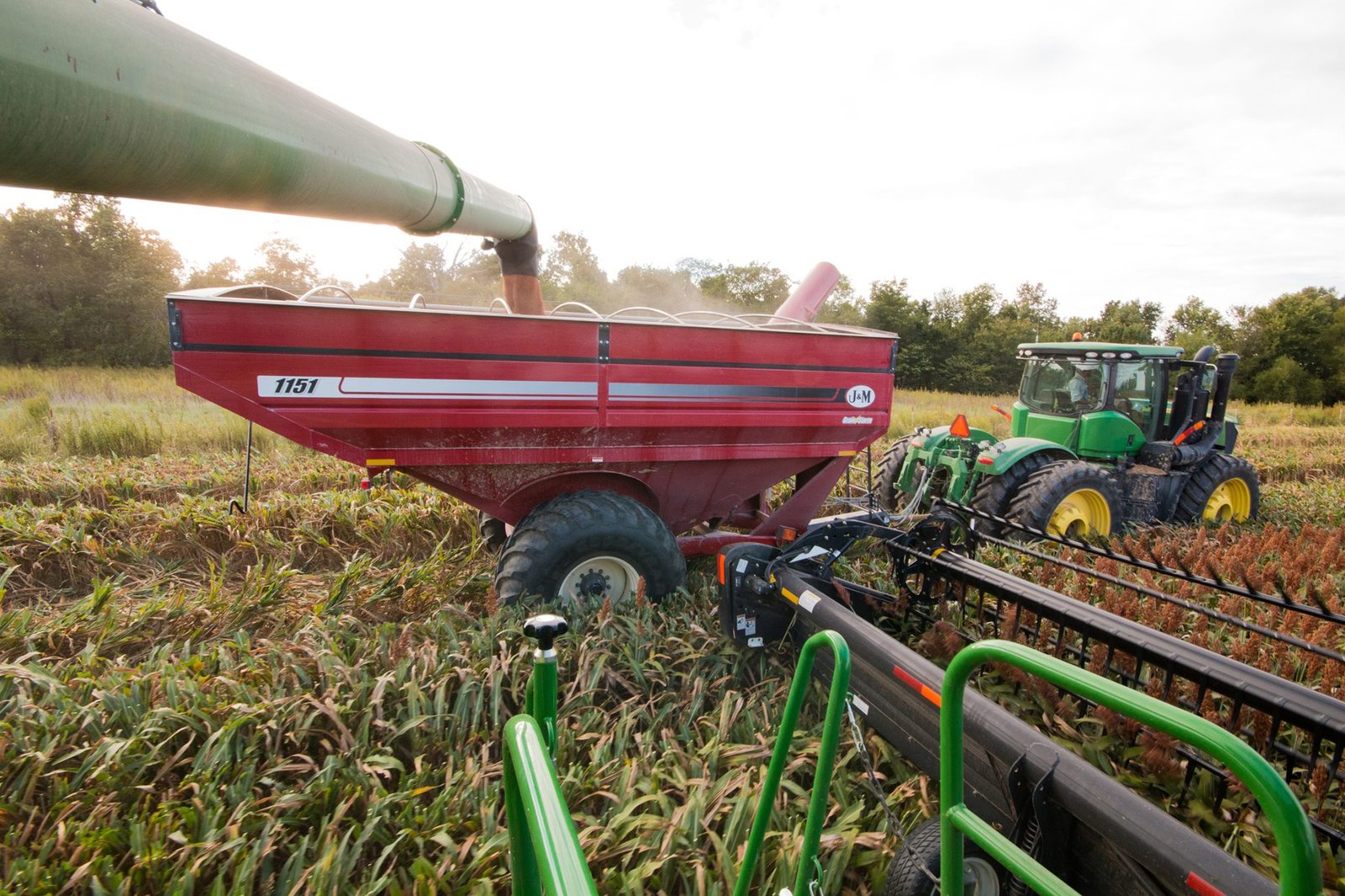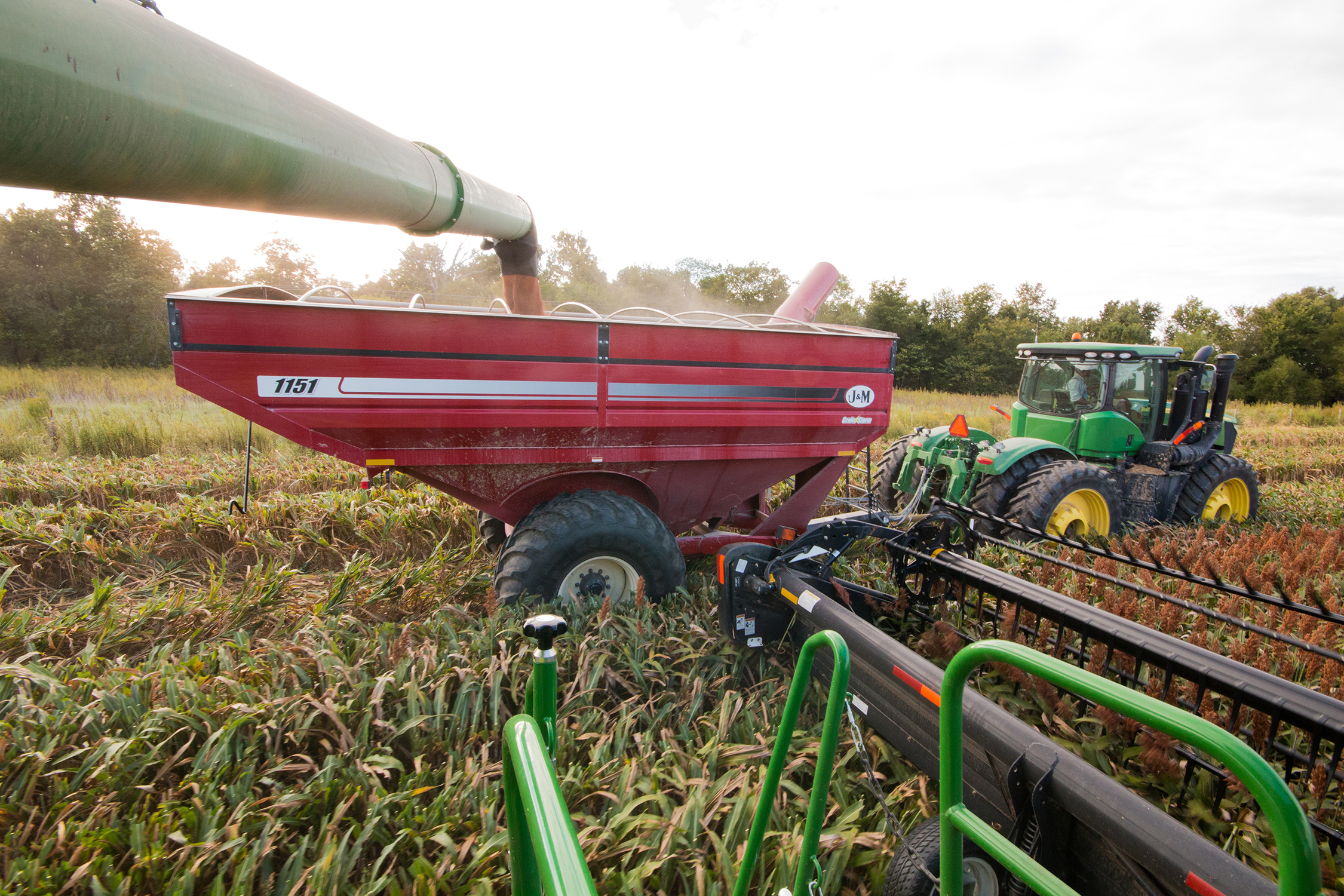Producers have started their combines and are ready for a bountiful harvest this fall. With 8.8 million sorghum acres planted, this is a season in which sorghum will excel.
A projected 574 million bushels of grain sorghum are expected to be harvested this year worth an estimated $2.3 billion. With the highest-valued crop in history and steadily increasing market demand, it is crucial sorghum farmers take precautionary measures to minimize harvest loss and capitalize on their sorghum crop.
A quality harvest is vital to end-users domestically and internationally. Sorghum has a quality advantage because it is a relatively durable grain that is often produced close to export ports. As farmers start their combines, they should keep in mind some of the following recommendations to improve harvest on the farm this year.
Quality Grain
A timely harvest is imperative to quality grain. Grain sorghum matures from the top of the head and progresses downward to the base. With this in mind, farmers should be sure to check grain at the bottom of the head to determine if the grain is mature. Initially, hard starch accumulates at the top or crown of each berry. The berry is considered mature once the hard starch has filled to the base of the berry. Mature grain will be hard to penetrate by pinching the base of the berry between fingernails.
Once grain has reached physiological maturity, the use of a harvest aid might be a prudent choice. This dries leaves down and actually speeds up harvest time and rates. Remember to consult chemical labels for appropriate rates and pre-harvest intervals.
Moisture Level
Monitoring the moisture level of grain sorghum is important to achieving an optimum harvest.
The ideal moisture level for harvesting sorghum grain is generally considered to be 14 percent or below. If the grain needs to be dried in the field, then farmers should plan to harvest as soon as the average moisture level drops to an acceptable level. Discounts on grain moisture usually begin above 14 percent. Growers should check with delivery points for their policies on accepting higher moisture grain.
Of course, the longer mature grain stays in the field, the greater the chance for weather and insects to adversely affect the quality of the grain.
Combine Calibrating
Making sure equipment works correctly is an important way producers can help achieve the highest yield and quality possible in the field.
In order to limit the amount of green material entering the combine, producers should raise their headers high enough to only harvest the grain heads. This will ensure a considerably lower intake of leaves and stalks in the combine.
Farmers should set combines for grain sorghum harvest as instructed by their operational manuals. Fine tuning of threshing adjustments will likely be necessary from time to time to assure the highest quality yields. It is also vital to maintain adequate air movement across the sieves. To assure the sieves are working properly, check and clean them regularly.
Excessive speed leads to cracked grain, increased foreign material and poor harvest efficiency. Taking time to follow procedures and correctly complete every step will pay off when the grain reaches the elevator.
Quality matters to our customers both at home and overseas just like just like export sales matter to you and your bottom line. Keep these practices in mind in order to continue providing the highest quality grain possible to our customers and keep sorghum sales coming in.
By Brent Bean, Sorghum Checkoff Agronomist
Source: Harvest Quality Grain Sorghum This Season – Sorghum Checkoff


